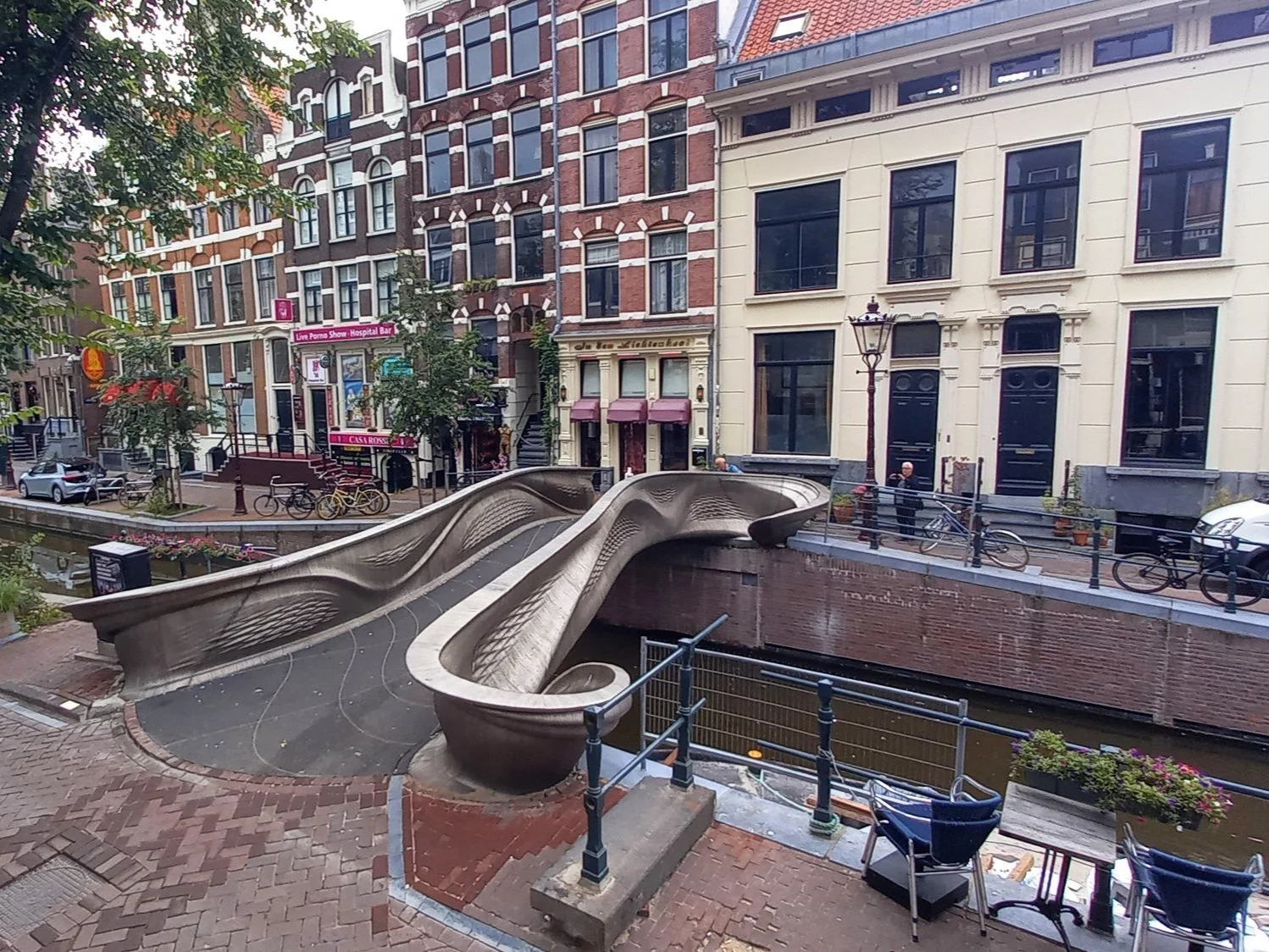Building Bridges
3D-printed steel and concrete bridges are here, showcasing the possible applications and advantages of the technology in architecture.
Since the invention of 3D printing, architects and designers have been experimenting with its applications with a huge range of materials, creating prototypes from ceramic lamps and terracotta bricks, to tiny homes and a basketball court, each in record-breaking times. Now, the technology has been put to the test in public spaces for everyday use.
In October, Venice inaugurated Striatus, a 3D-printed concrete bridge brought to life by Zaha Hadid Architects and ETH Zurich. The 52-foot long structure is composed of 53 hollow, 3D-printed concrete blocks and zero adhesives, which come together to create an arch much like traditional masonry bridges that take advantage of compression and gravity. The bridge's construction, including foundation casting, printing, assembly, and stair and deck installation, took just over a month.
Venice isn’t the only city thick with canals and cool bridges. Following the successful installation of a 3D-printed concrete bridge for cyclists in 2017 in Gemert, the Netherlands, this summer the Dutch Queen Maxima teamed up with a small robot to unveil the world’s first 3D-printed steel bridge over one of Amsterdam’s oldest canals. The stainless-steel structure was welded by robots using a type of 3D printing technique developed by technology company MX3D. What’s more interesting, the eye-catching design by Dutch designer Joris Laarman is also embedded with smart sensors that measure real-time foot traffic and analyze how people use public spaces and how bridges wear down over time.
The installation of the bridges, as well as the data they collect, will inform architects, engineers, and designers worldwide about a new tool at their disposal to build creatively and responsibly.
Sources: Dazeen (July 28, 2021) | Dazeen (October 27, 2017) | Image: PersianDutchNetwork


